The mobile phone it effectively became a computer that you can have with you almost all the time. Hence the need to be able to share data between a computer and a mobile phone and vice versa, so that you can always jointly access the data, and when you do some changes, the changes to be synchronized on all the devices.
This article addresses to the phone or tablet owners with Android and with computers with Windows, macOS or any other supported OS. The Cloud service that is being used is Google Drive, which offers 15 GB free storage space, but users have the option to purchase additional cloud space as needed.
Find out further what you need to do to share folders with files from your computer, via Google Drive, so that you can access them from an Android phone or tablet. Additionally, you’ll see what sync options are available, and how you can enhance security so that the data is safe.
Installing Google Drive on the computer
To install Google Drive on your computer (PC or laptop), follow these steps:
- Download Google Drive: Visit the official Google Drive download page using this link.
- Choose Your Operating System: Google Drive is compatible with Windows, macOS, and other operating systems. Click on the download button corresponding to your operating system.
- Run the Installer: Once the download is complete, locate the downloaded file (usually in your Downloads folder) and double-click on it to run the installer.
- Follow Installation Prompts: Follow the on-screen prompts to install Google Drive on your computer. You may need to agree to the terms of service and choose installation options as prompted.
Installing Google Drive on Smartphone or Tablet
Google Drive is typically pre-installed on your Android mobile phone or tablet. You can easily find it by searching for it in your list of installed applications.

If you’re unable to locate it, you can download and install Google Drive from the Google Play Store:
- Open the Google Play Store app on your device.
- Use the search bar to look for “Google Drive.”
- Once you find Google Drive in the search results, tap on it.
- Hit the “Install” button to begin the installation process.
If your device does not have the Google Play Store app due to variations in manufacturers and Android versions, you’ll need to follow a guide on how to download and install the Google Play Store.
Configuring and Sharing a Folder from Your PC in Google Drive
Follow these steps to configure and share a folder from your PC using Google Drive:
- Open Google Drive on your computer and select “Sign in with browser” from the window that appears.

- Authenticate with your existing Google account, which you’ll also use or already use on your mobile device. Click “Sign in” to proceed.
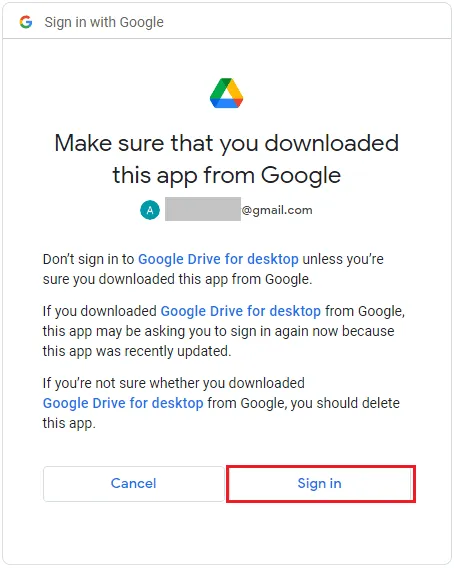
- Navigate to Preferences within Google Drive.
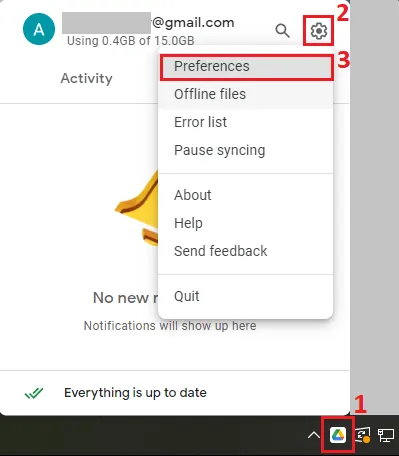
- Choose the sync type you prefer:
- Stream files: Save files only in the Cloud, not on the computer. Files will be retrieved from the Cloud both on the computer and your device later.
- Mirror files (recommended): Keep a copy of the files on the computer while also saving them in the Cloud. If you don’t have internet access on your computer, you can still access the files directly from your computer with the latest synchronization.
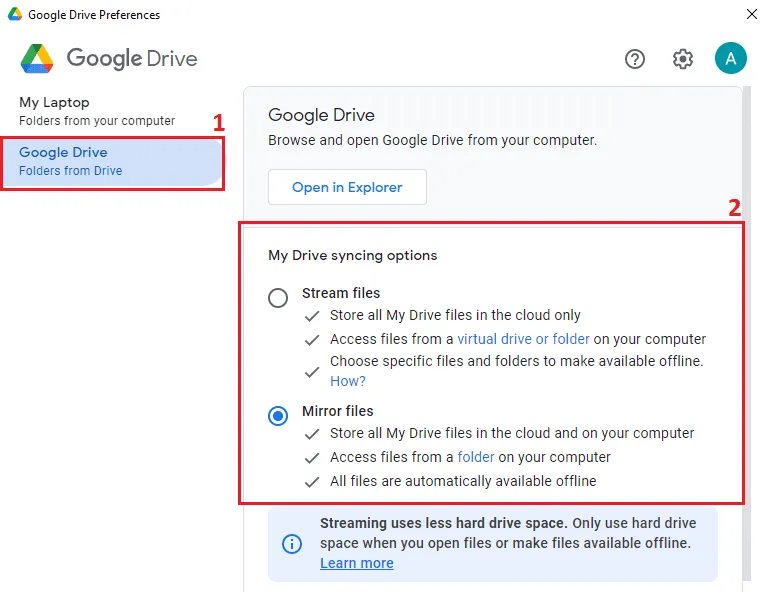
- An empty virtual drive named “Google Drive” is automatically created. Here, you can copy the folders (along with all their files) that you want to make accessible on all your devices through this virtual drive. These folders will be accessible only from the cloud and will not be stored offline.

- Include folders from your computer that you want to access from your phone, tablet, or any other device. The original folder will remain offline on the computer and will be synchronized across devices.

Accessing and Editing Shared Documents from Your Mobile Device
To access and modify shared documents from your mobile device, open Google Drive on your mobile device and navigate to the folder you want to access, or use the search function to find the specific file you wish to view or edit.
All folders and documents saved in your Google Drive account from your computer will appear under “My Drive”.
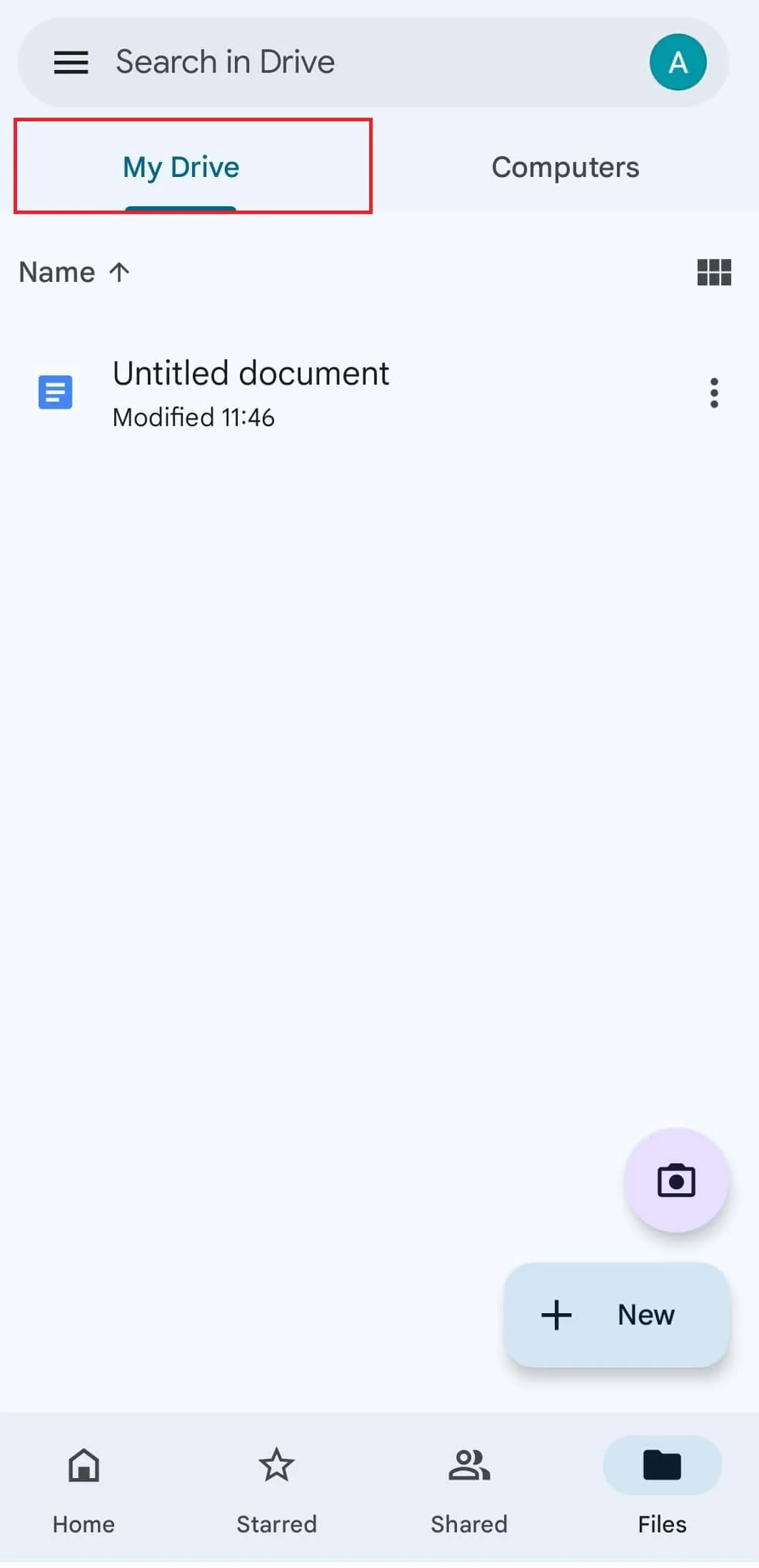
Manually included folders from your computer will appear under the “Computer” tab.
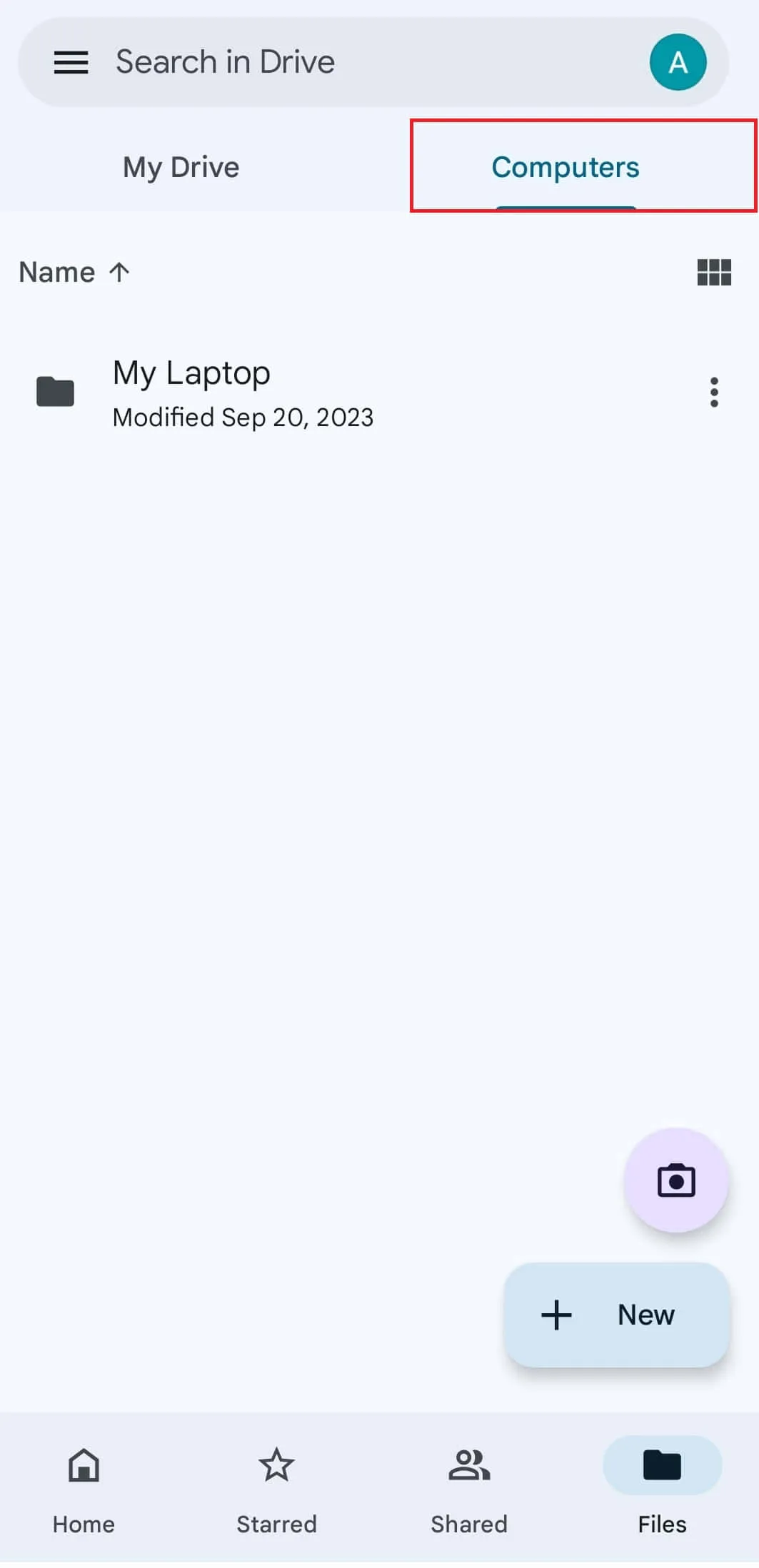
Any changes you make on your phone or tablet will be automatically saved on the computer, and vice versa. This ensures that your files remain updated and synchronized across all your devices as quickly as possible.
You can not only access and edit existing documents but also add new ones, delete, or rename documents directly from your mobile device.
Security Recommendations for Shared Data
When you save documents in Google Drive, they can be accessed from your computer, smartphone, tablet, or directly online by accessing Google Drive through the browser using the link drive.google.com/drive/.
To ensure the safety of your data across devices and accounts, consider the following security measures:
- Use a Strong Password for Your Google Account: Your Google account should use a strong password for login. Ensure it has at least 8 characters in length and includes a combination of digits, uppercase letters, lowercase letters, and special characters. Make sure the password is known only to you.
- Secure Your Devices: Ensure that the computers and devices from which you access shared files are protected with strong passwords or advanced biometric data, such as fingerprints.
- Encrypt Data on All Devices: Implement encryption for the data stored on all your devices. Encryption adds an extra layer of security by encoding information to make it unreadable to unauthorized users.
By implementing these security measures, you can help safeguard your shared data and ensure that only authorized users have access to it across various devices and platforms.
With Google Drive, you can access and edit documents across multiple devices, including computers, smartphones, and tablets, eliminating the need for memory drives or data transferring services to manually migrate, integrate, and synchronize documents across devices.
Furthermore, your data is securely stored in the Cloud, allowing you to restore it later if it’s lost from your computer.
